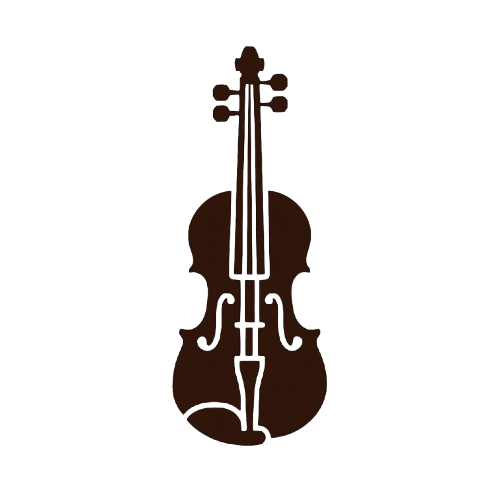£20 an hour. First lesson free.
PSA: You’re allowed to learn just for fun.
It’s easy to get caught up in the world of exams, grades and progression. If you’re not into all that, learning for fun offers a wonderfully liberating alternative. This approach puts personal enjoyment and stress relief at the forefront, allowing you to progress at your own pace without any pressure. You have the complete freedom to explore the music you genuinely love, whether that’s classical, pop, traditional folk, or film scores, tapping into the violin’s incredible versatility. You still gain all the proven cognitive benefits like improved memory and coordination, but in a relaxed way that makes playing a fulfilling and creative outlet rather than a requirement.
- Personal enjoyment and stress relief
- Freedom to explore your favourite music.
- All the benefits; no pressure.

Grade 1
As the first formal step in graded exams, Grade 1 is about building a solid foundation. At this level, I teach students the fundamentals of posture, how to correctly hold the violin and bow, and how to produce a clear, steady tone. We focus entirely on the first position, learning basic one-octave scales and arpeggios from memory. The curriculum covers three short, contrasting pieces from the syllabus to develop initial musicality, alongside simple sight-reading and aural tests designed to build listening skills and note recognition. My goal is to make this first experience encouraging and fun, ensuring the student is confident with the core basics before moving on.

Grade 2
Grade 2 continues to build on the beginner-level skills established in Grade 1, with all playing still confined to the first position. As a tutor, my focus shifts to improving tone quality, intonation, and developing more varied bowing techniques. The pieces become slightly more demanding in rhythm and length, requiring greater control and musical awareness. We expand the student’s knowledge of scales and arpeggios, introducing two-octave scales and new key signatures. The sight-reading and aural tests also increase slightly in complexity, which we prepare for by working on quicker note recognition and identifying more detailed musical elements.
Grade 3
Marking the transition to the intermediate level, Grade 3 requires students to play with more confidence and stylistic understanding. My teaching at this stage concentrates on developing a richer, more controlled tone and introducing more expressive techniques like dynamic contrasts and phrasing. The repertoire is more complex, and we work on interpreting the character of each piece. The technical work expands to include a wider range of two-octave scales and arpeggios, which must be played with increasing fluency and accuracy. This grade solidifies the skills learned so far, preparing the student for the introduction of position work.

Grade 4
Grade 4 is a significant milestone where students are first required to move out of the first position and begin shifting. A major part of my tuition is dedicated to introducing the third position, focusing on accurate intonation and smooth, confident shifts. The repertoire now demands this new technical skill, alongside more advanced bowing styles and greater musical maturity. The scale requirements become more extensive, introducing new keys, dominant sevenths, and chromatic scales to be played from memory. We work extensively on sight-reading that incorporates shifting to ensure the student is comfortable navigating the fingerboard.

Grade 5
Grade 5 is a crucial qualification that represents the culmination of intermediate study and acts as a gateway to the higher grades. To even enter for a Grade 6 practical exam, a student must first pass Grade 5 Music Theory. Therefore, my teaching is twofold: preparing them for the demanding Grade 5 practical syllabus and ensuring their theoretical knowledge is sufficient. The practical work involves more complex pieces requiring refined musicality, and the technical requirements include scales and arpeggios in a wide range of keys, often with slurred bowing patterns. Sight-reading can now involve higher positions, so we work to make the student secure across a broader range of the instrument.
Grade 6
Entering the advanced levels, Grade 6 demands a higher level of technical proficiency and musical interpretation. A key responsibility I teach at this stage is how to tune the instrument independently, as this is a requirement from Grade 6 onwards. The repertoire is substantially more challenging, featuring works that require nuanced expression, advanced bowing techniques, and performance stamina. We work on three-octave scales, double-stops, and more complex arpeggios to build advanced technical command. My focus as a tutor is on refining the student’s personal musical voice, helping them craft a truly expressive and polished performance.

Hear it from others
I’ve helped many students help achieve their goals.
Francesca Piovani
Founder, CEO, and Architect
Rhye Moore
Engineering Manager
Helga Steiner
Architect
Ivan Lawrence
Project Manager
If you’re in Edinburgh,
Come to me, or I’ll come to you (within reason)!
